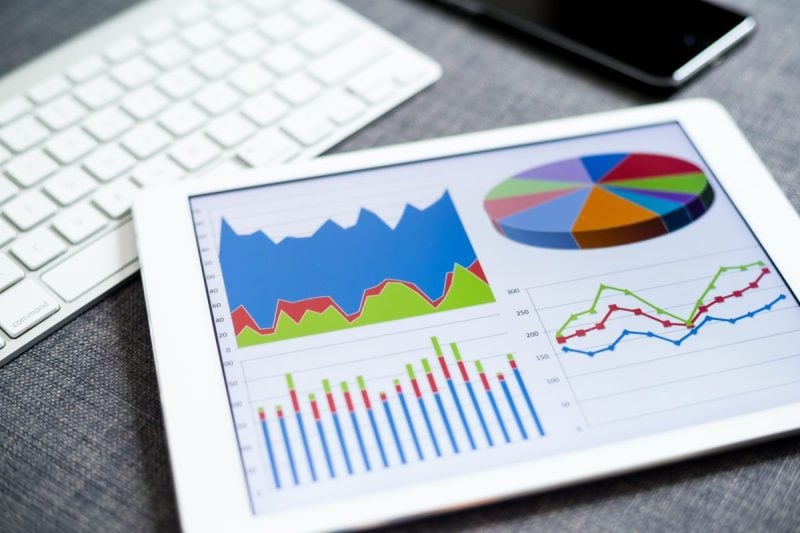Shopify can take your ecommerce business to new heights, but low website performance can really hold you back. In this article, we will discuss best practices for Shopify speed optimization. We will also discuss Shopify SEO optimization, as well as other Shopify optimization services.
What is Shopify?
- 1 What is Shopify?
- 2 Why is Shopify Optimization Important?
- 3 Best Practices for Shopify Speed Optimization
- 4 Shopify SEO
- 5 Shopify Optimization Services
- 6 Frequently Asked Questions
- 6.1 1. What is the most important factor for Shopify speed optimization?
- 6.2 2. How many Shopify apps should I install, and how do they affect site speed?
- 6.3 3. Why is mobile optimization crucial for Shopify stores?
- 6.4 4. What are the key differences between Shopify speed optimization and Shopify SEO?
- 6.5 5. How can I monitor and measure my Shopify store’s performance?
- 6.6 6. What role does content creation play in Shopify SEO optimization?
- 6.7 7. What essential tools and services should I use to optimize my Shopify store?
Shopify is one of the worldwide leaders in ecommerce thanks to its reliability and easy-to-use interface. If you want to sell products online, Shopify is a great resource. They will host your ecommerce website, so you won’t have to worry about dealing with server maintenance which can be expensive and time-consuming. Also, you have tons of options for customization as well as resources for coupons, free shipping, and custom tags for each product.
Shopify has become a giant in the ecommerce industry. Out of the 1 million most popular websites, over 36,000 run on Shopify’s servers. In the past year, that number increased by over 10,000. Today, over 1.5 million ecommerce businesses total trust Shopify to help them reach their consumers, which brings in over $350 million per year in net revenue.
Why is Shopify Optimization Important?
Building a great Shopify website is an essential part of your business, but it’s possible to do too much. The more content you put on your website, the longer it will take the data to load from Shopify’s servers. This can make the user experience more difficult as potential customers will have to wait longer to view your website and products. If you’re looking to drive traffic to your Shopify store, speed optimization is a great way to ensure you’ll convert that traffic into a sale.
Shopify speed optimization is just one part of making sure your website is optimized for consumers. Search engine optimization, or SEO, is vital to ensuring that your company has a presence across the internet. Below, we’ll highlight some of the best tips for Shopify speed optimization and Shopify SEO!
Best Practices for Shopify Speed Optimization
Here are some tips and best practices to help you optimize your Shopify for speed.
Check Your Page Speed
The best way to know how your website is performing is very simple: check your statistics! There are plenty of tools online to help you figure out how quickly your page runs. One of the most popular ones is Google Pagespeed Insights, which offers tons of data. In addition to a pagespeed score out of 100, they offer specific data on which areas of your site could be further optimized. They also offer specific diagnostics, like removing old data or minimizing text, to ensure that your Shopify store is fully optimized for speed.
It’s important to use these tools while you’re making changes to your Shopify store. If you need to update your product catalog or change your web development, use Pagespeed Insights to make sure you don’t sacrifice speed with your changes. Constantly monitoring your Shopify store’s speed optimization is a great way to ensure a smooth customer experience.
Choose a Simple Design
When making your website, it’s normal to want to put tons of information and images. After all, you want to make sure that all your customers know exactly what they’re getting from your company! While lots of pictures and text may seem like a good idea, it can really damage your Shopify speed optimization. The more data you have, the longer it will take the server to retrieve. That means your customers won’t even be able to see the data after you’ve put in all this effort.
Make sure that all images on your website are uploading at render size, which is the size that the photo will appear to customers. Sometimes, images can upload at nearly twice the render size, which can cause performance issues on your Shopify site. Another great feature of Shopify is that you can choose your own theme for your store. However, certain themes are more complex than others and may cause a longer loading time. Choosing a lightweight theme will ensure that customers won’t spend a long time waiting for your website to load.
Eliminate Unnecessary Apps
In addition to all the great customization features, Shopify offers lots of apps to optimize your Shopify store. There are apps to assist with sales conversion, customer service and so much more! You might be tempted to download a bunch of different apps to your Shopify store, but be careful. Adding more apps than necessary can hurt your store’s speed optimization due to the time it takes to load.
With that said, you can still add Shopify apps to your store for optimization as long as you choose carefully. It’s best to use Shopify apps for the areas where your business needs a boost. Let’s say, for example, that your Shopify store has a high SEO ranking but fails to convert that to sales. By adding an app that focuses on conversion rate optimization (CRO), you can generate larger sales. You can also add apps for free shipping and order printing to incentivize customers while keeping costs low!
Test Your Mobile Performance
While optimizing your Shopify store’s speed, it’s important to consider mobile customers. Research shows that mobile sales could make up as much as 45% of all online sales by 2024. With the rise of social media marketing, many more customers are inspired to make purchases from their phone. If your mobile Shopify store isn’t optimized, you could be missing out on tons of customers.
One of the biggest problems of optimizing for mobile is the change in layout. By choosing a mobile-friendly Shopify theme, your customers can avoid confusion. To streamline the experience, make sure that the “Add To Cart” or “Checkout” buttons are easily accessible. If they’re difficult to find, customers may not decide to purchase your product. Finally, make sure your website is easy to navigate. On smaller screens, it can sometimes be hard to find your way around a website. Prioritize accessibility over design for a smooth customer experience.
Shopify SEO
Once your Shopify store is optimized for speed, it’s time to focus on SEO. By prioritizing SEO for Shopify, your ecommerce business can make some amazing strides. Think about it: if your customer is using a search engine, they’re already online. Your Shopify store is just a click away!
There are a few ways to optimize SEO on Shopify. Like optimizing for speed, make sure your website is free from large images and unnecessary text. It will make it harder for the search engine to find results on your page. Additionally, blogging is a great way to promote keywords on your site. There are plenty of great content ideas, like customer testimonials, product reveals, or behind the scenes information.
Finally, apps can be very helpful for Shopify SEO (as long as you don’t use too many!) Certain apps like Oberlo will let you know how you can improve your site’s SEO with simple solutions. Gaining data from other apps can also be helpful: if you use the free shipping bar app, your website may appear if a customer specifies that they want free shipping.
Shopify Optimization Services
If you want to further optimize your Shopify store, make sure to check out some of these additional Shopify optimization services below!
Google Analytics
Google Analytics is one of the most powerful tools in advertising today, and they can add a huge boost to your Shopify store. It will help to give you a better idea of your target audience and performance against competitors. You can even add ecommerce tracking to your account on Google Analytics to make sure that your Shopify store is reaching everyone! Google is one of the most powerful services for Shopify optimization, so make sure your business utilizes all its services!
Moz Keyword Tool
Moz is one of the leaders in SEO, and their keyword tool can open tons of opportunities for your business. By simply typing in certain keywords, you’ll see how often they are searched and which related keywords may perform better. This can allow you to change your keyword strategy, or adopt new keywords to highlight on your site. This increases your chances of appearing on search engine results pages (SERPs), which will drive more traffic to your website!
Wishlist Plus
This Shopify service makes online shopping seamless for your customers! If they notice something they like on your store but aren’t ready to save, Wishlist Plus will save the items that they like for when they want to return later. If a customer returns to your Shopify store and sees the item in their cart, they can save time by not looking for it. Streamlining this process will create a more enjoyable experience for everybody!
While Shopify is one of the best ecommerce platforms on its own, using these services to optimize your Shopify store will pay huge dividends. With a faster customer experience and a high SEO ranking, your website will enjoy lots of traffic that can be converted to sales. If you’re ready to get started, reach out to SEO Design Chicago to take your Shopify store to new heights!
Frequently Asked Questions
1. What is the most important factor for Shopify speed optimization?
The most crucial factor is reducing the amount of data your website needs to load. This includes choosing a simple, lightweight theme, optimizing images to render size (the actual size they appear to customers), and eliminating unnecessary content. Images uploading at twice their render size can cause significant performance issues. Use tools like Google PageSpeed Insights to regularly monitor your site’s performance and get specific recommendations for improvement. Remember, the more content you add, the longer it takes Shopify’s servers to load your data.
2. How many Shopify apps should I install, and how do they affect site speed?
While Shopify offers many useful apps for conversion, customer service, and optimization, you should be selective about which ones you install. Too many apps can significantly slow down your site’s loading time. Focus on apps that address your specific business needs – for example, if you have good SEO rankings but poor conversion rates, prioritize a conversion rate optimization (CRO) app. Only install apps that provide clear value to your business goals, and regularly audit your installed apps to remove any that aren’t essential.
3. Why is mobile optimization crucial for Shopify stores?
Mobile sales are projected to make up 45% of all online sales by 2024, and with the rise of social media marketing, many customers make purchases directly from their phones. Mobile optimization requires choosing mobile-friendly themes, ensuring “Add to Cart” and “Checkout” buttons are easily accessible, and prioritizing simple navigation over complex design. On smaller screens, website navigation can be challenging, so accessibility should take priority over elaborate design elements to ensure a smooth customer experience.
4. What are the key differences between Shopify speed optimization and Shopify SEO?
Speed optimization focuses on reducing loading times through lightweight themes, optimized images, minimal apps, and streamlined content. SEO optimization aims to improve search engine visibility through keyword strategy, quality content creation like blogs, and avoiding large images or unnecessary text that make it harder for search engines to crawl your pages. Both work together – a fast-loading site improves user experience and can positively impact SEO rankings, while good SEO brings traffic that needs to be converted through fast, efficient site performance.
5. How can I monitor and measure my Shopify store’s performance?
Use Google PageSpeed Insights to get a performance score out of 100 plus specific optimization recommendations like removing old data or minimizing text. Google Analytics provides powerful insights into your target audience, performance against competitors, and ecommerce tracking specifically for Shopify stores. Regularly check these tools when making changes to your product catalog or website development to ensure you don’t sacrifice speed. Continuous monitoring helps maintain optimal customer experience and identify areas for improvement.
6. What role does content creation play in Shopify SEO optimization?
Blogging is an excellent way to promote keywords and improve your Shopify store’s SEO. Create content around customer testimonials, product reveals, behind-the-scenes information, and industry-related topics that incorporate your target keywords. This content helps search engines understand what your store offers and can improve your visibility in search results. Use tools like Moz Keyword Tool to research high-performing keywords and related terms that can drive more traffic to your site through search engine results pages (SERPs).
7. What essential tools and services should I use to optimize my Shopify store?
Three key optimization services include: Google Analytics for audience insights, competitor analysis, and ecommerce tracking; Moz Keyword Tool for researching search volume and discovering better-performing related keywords for your SEO strategy; and Wishlist Plus for improving customer experience by allowing shoppers to save items for later purchases. These tools work together to improve both your site’s performance and your ability to attract and convert customers. Focus on tools that provide measurable value and align with your specific optimization goals.








Contact Us today!